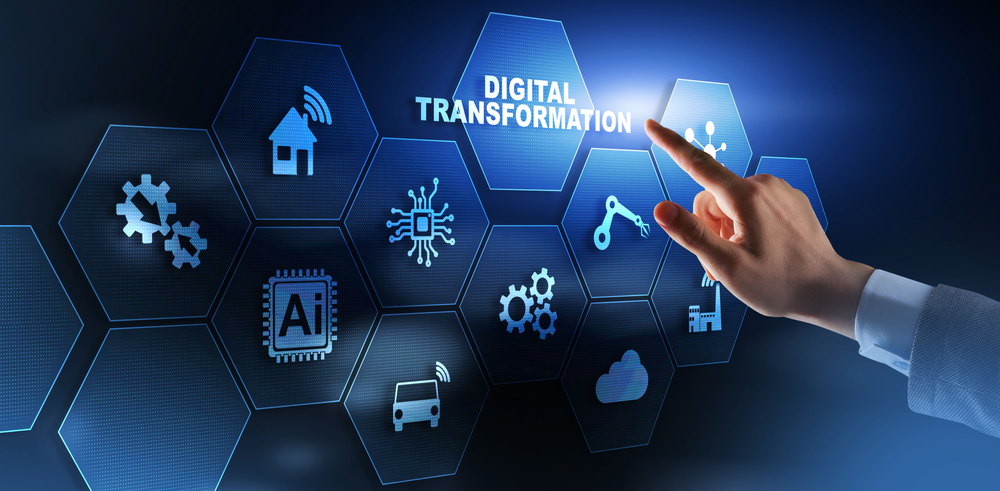
[ad_1]
In the first part of this blog series, I covered the “all-flash” part of the all-flash DC and how it can turn your data green.
Part 1: All-Flash Data Centers: Turning Your Data Green
In this second post of six, I’ll be diving a little deeper into digital transformation (DX) and how the all-flash DC can help speed up your DX journey.
You’ve most likely already heard the term “digital transformation”. It’s a relatively popular buzzword among the many to have emerged recently. But what does it mean and is it just another trend that will soon fizzle out?

What Is Digital Transformation?
In general terms, DX is the integration of digital technologies into all areas of an enterprise, bringing about fundamental changes to how that enterprise operates and how it delivers value to customers. DX covers everything from simply putting services online and defining new digital business models, right the way through to digital optimisation and full-blown IT modernisation.
Think of things like cloud computing, big data and analytics (BDA), artificial intelligence (AI), the Internet of Things (IoT), blockchain, and even quantum computing. How you integrate these into your enterprise defines your DX journey.
Many enterprises are adopting DX in order to improve customer experience, increase productivity, or boost profitability — it is rapidly changing how they create value and how they compete. In today’s digitally infused times, enterprises typically have three choices: fall behind, match the pace of change, or lead the pack. If you’ve not already thought about adopting DX, consider the following predictions:
- 65% of the global GDP is set to be digitalised by 2022
- 75% of enterprises will have an overall roadmap for DX by 2023
- Global spending on enterprise DX will reach US$2.4 trillion by 2024
It’s likely that your competition already has a DX plan in place, so in order to not fall behind, it’s imperative to start looking at how your enterprise needs to evolve.
Although DX will vary widely for each enterprise, it’s generally a good idea to consider the following elements before starting your DX journey:
- Customer experience
- Operational agility
- Culture and leadership
- Workforce enablement
- Digital technology integration
Figuring out how DX will affect each of these elements is critical for business success.
For example, how will DX improve customer experience in a bricks-and-mortar store? While it’s reasonable to assume that such a store wouldn’t benefit from DX because all its sales come from physical customers, many customers today are virtual — they shop online. Placing the store’s inventory online would allow customers to see what’s available, enhancing customer experience while opening up the potential of attracting a new online customer base.
Bricks-and-mortar stores could also use things like QR codes. By scanning these codes, physical customers could access full details about products and even read reviews, further boosting customer experience. An added bonus would be that the store could keep track of sales and stock much more easily.
DX could also boost your agility, allowing you to quickly and easily adapt to changing trends. And it could redefine your enterprise culture and leadership by creating digital channels through which to share information with staff, thereby building trust in a digital workplace.
There are so many possibilities with DX that it’s impossible to cover them all in a short blog. The key takeaway though is to start planning your DX if you haven’t already. DX will not be a short-lived trend — it will likely reshape our enterprises for many years to come. Unfortunately, those who ignore DX will be left far behind.
DX Powered by the All-Flash DC
You’ve decided DX is for you. Great! But what do you need to do now? Well, the most important thing is to be prepared to handle vast amounts of data. Handling so much data might seem like a daunting task, but with the right approach, it can be as simple as a few mouse clicks.
The main challenge will be to store that data and access it when you need it. This is where the all-flash DC comes in. As I discussed in my previous post, an all-flash DC is composed of mainly super-fast SSDs, allowing you to store, process, and download your data in a heartbeat.
Enterprise DX has sparked many changes that affect data generation, collection, transmission, processing, storage, management, and utilisation. These changes include:
Massive Data Growth
The total global data will grow from 64 zettabytes (ZB) to nearly 180 ZB by 2025, with a compound annual growth rate (CAGR) of 23% from 2020 to 2025. As your enterprise grows, so too will the amount of data you need to handle. Making sure you can do so effectively will be critical.
Diverse Data Types
IDC classifies data across more than 70 categories of devices into 6 major types:
- Entertainment data
- IoT data
- Non-entertainment image/video data
- Productivity/embedded data
- Social media data
- Voice data
As you travel along the DX path, you’re likely to generate and obtain many more types of data. For example, you might deploy more IoT devices and advertise more heavily on social media. You won’t be alone, as IDC predicts that by 2025, IoT devices will generate 26.6 ZB of data, making IoT the fastest growing data field with a CAGR of 47% from 2020 to 2025. And social media data follows closely behind with a projected CAGR of 35.4%.
High Requirements on Data Transmission and Processing
Real-time data is becoming more important as enterprises adopt technologies such as AI and IoT. Edge computing is emerging for this purpose, aiming to minimise latency and speed up response times. By 2023, 70% of enterprises will process data at the IoT edge, and by 2025, 40 ZB of data will be generated at the edge. To avoid falling behind, it’s vital to have real-time data.
More Data to Store and Manage
Global storage capacity is expected to reach 16.1 ZB in 2025, with newly built storage capacity at the core maintaining a 5-year CAGR of 26%, while storage capacity at the edge will grow at a CAGR of 30.3%. Having the right type of storage solution will allow your enterprise to utilise data quickly and efficiently, letting you concentrate on providing first-class customer experience.
To carry out DX successfully, you’ll need to build customer-centric and data-driven digital services. By integrating digital and physical channels, you will be able to effectively collect, process, and store data, and subsequently extract its value in order to create a better experience for customers.
The all-flash DC — along with helping you achieve energy efficiency and sustainable development — can be used to carry multiple types of service, including critical and value-added ones. It is flexible enough to ensure the lowest latency for workloads, and implements intelligent O&M to facilitate cross-domain deployment throughout the data lifecycle.
As future applications demand ever-increasing access speeds, your systems will need to provide higher performance to meet demand. Switching to the all-flash DC will not only minimise your total cost of ownership (TCO) and expenditure per I/O, but also simplify management.
In my next post, I’ll look at what data means for your enterprise and how you can derive value from it. Be sure to check back soon.
This post is adapted from the Huawei-sponsored IDC White Paper Moving Towards an All-Flash Data Center Era to Accelerate Digital Transformation.
Read More:
Disclaimer: Any views and/or opinions expressed in this post by individual authors or contributors are their personal views and/or opinions and do not necessarily reflect the views and/or opinions of Huawei Technologies.
[ad_2]
Poster un Commentaire